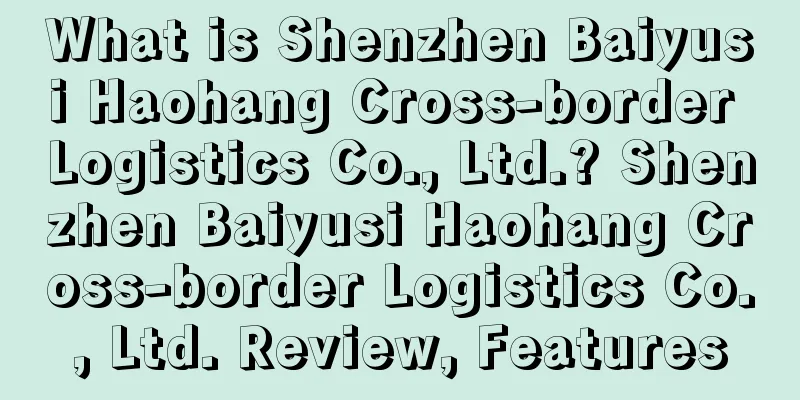Amazon Global Store released the "2022 China Export Cross-border E-commerce Industry Cluster Development White Paper"

|
Today, Amazon Global Selling released the "Gathering Momentum and Bravely Expanding New Opportunities - 2022 China Export Cross-border E-commerce Industry Cluster Development White Paper" (hereinafter referred to as the White Paper) at the 2022 China Cross-border E-commerce Fair (Autumn) Media Exchange Conference. From the four dimensions of industrial foundation, trade ecology, development potential and cross-border progress, it shared the characteristics of 17 relatively active and relatively mature export cross-border e-commerce industry clusters, covering the Pearl River Delta, Yangtze River Delta, Haixi, North China, and central and western regions. The White Paper shows that China's export cross-border e-commerce industry clusters are accelerating transformation and upgrading, showing a trend of blooming in multiple places from the coast to the inland, from the east to the west. More and more industrial clusters with traditional foreign trade advantages have achieved global business expansion and brand building through export cross-border e-commerce.
Peng Jiaqi, Vice President of Amazon China and Head of Products and Markets for Amazon Global Selling in Asia Pacific, said: "In the past few years, China's cross-border e-commerce exports have shown great resilience, and as a new form of foreign trade exports, it has gradually released new potential. We have seen that on Amazon's global sites, many sellers from China's advantageous industrial clusters have shown great potential and vitality in R&D design, product innovation, brand building, and global expansion. The global retail e-commerce market is rich and diverse, and contains huge opportunities. In the future, we hope to work with governments at all levels, industry partners and sellers to continue to promote the transformation and upgrading of China's export cross-border e-commerce industrial clusters, so that more Chinese brands can go global and jointly create a new global brand landscape."
Five major overseas characteristics of China's export cross-border e-commerce industry clusters "show their magical powers"
The white paper shares the characteristics of 17 industrial clusters, including Shenzhen consumer electronics, Foshan furniture, Hangzhou clothing, Ningbo office stationery, Yongkang hardware, Xiamen clothing, Qingdao home textiles, Sichuan and Chongqing auto parts, etc. As a microcosm of the development of China's export cross-border e-commerce, these industrial clusters have their own characteristics. Their development in the field of export cross-border e-commerce reflects the transformation and upgrading of China's traditional manufacturing industry from multiple perspectives.
First: Traditional advantageous industries use digitalization to open up new growth models
Compared with traditional foreign trade, cross-border e-commerce can help enterprises directly reach overseas consumer groups in a lightweight way, get rid of the restrictions of traditional foreign trade intermediate links, and quickly respond to consumer needs, allowing enterprises to take the initiative in development. In the past few years, many industrial clusters with traditional advantages have successfully embarked on the road of digitalization with the help of cross-border e-commerce.
Take Yuanfeng Industry from Qingdao home textile industry cluster as an example. Yuanfeng Industry mainly deals in textiles and bedding products. It went online on Amazon US in 2015. By understanding the needs of overseas consumers and grasping the trends of overseas markets, Yuanfeng Industry's cross-border e-commerce business has achieved rapid development and has maintained an efficient growth of 200%-300% in the past three years.
Second: Polishing "products" and "brands" has become the focus of sellers going overseas
Chinese companies going overseas have begun to gradually develop from winning by price to paying more and more attention to products and brands. While Chinese sellers are doing their best in product research and development and design, they are constantly giving brand connotations, consolidating brand concepts, and accumulating consumer recognition and trust. Data shows that in the past three years, brand sellers in the Pearl River Delta, Yangtze River Delta, and Haixi Economic Zone in China on Amazon have achieved a 2-3 times growth; while in North China and the central and western regions, the number of brand sellers has increased by 5 times, reflecting a clear latecomer advantage. Take Shenzhen sports headphone brand Shokz as an example. Shokz applies bone conduction technology to consumer scenarios. By continuously improving its products, it has developed professional sports headphones with small size, light weight, good sound quality, and good wearing experience. The ultimate product design has made Shokz continue to gain the favor of digital circles, sports circles, and consumers at home and abroad, and many of its products are best-selling on Amazon.
Third: "Technological innovation" and "agile manufacturing" give sellers a breakthrough advantage
China's export cross-border e-commerce industry cluster is showing great vitality and potential in terms of technological innovation and agile manufacturing. In the past few years, Chinese companies have made full use of their technological innovation advantages to continuously upgrade "Made in China" to "Made in China". For example, Roborock, a brand of sweeping robots, has created 1,371 intellectual property rights, including 753 patents. They use laser speed measurement to quickly obtain distance information, and combine real-time positioning with map construction algorithms, which greatly improves the user experience and thus successfully opens up the foreign consumer market.
At the same time, in the face of a rapidly changing external environment, Chinese sellers can also accurately capture consumer needs, respond in a timely manner, and agilely develop products that meet consumer needs. Lin's Home Furnishing has expanded its advantages of rapid iteration and intelligent innovation to overseas markets and developed furniture products that adapt to the usage scenarios of foreign consumers. As of August 2022, Lin's Home Furnishing's overseas annual sales on Amazon increased by more than 100% year-on-year.
Fourth: Chinese sellers are exploring new business opportunities by focusing on niche categories and emerging sites
More and more sellers are digging deep into the niche market on Amazon, gaining insights into consumers' usage needs in different scenarios, fully tapping the potential of subcategories, and finding broad development space in the niche market. In the past three years, the performance of Sichuan and Chongqing auto parts sellers on Amazon has increased by 1.6 times.
Take Chongqing Guogui Racing as an example. The founder made full use of the racing culture he was familiar with and founded his own brand MaxpeedingRods in Chongqing, connecting the perfect supply chain and strong manufacturing capacity of Chongqing, a major automobile manufacturing center in China, to sell racing parts overseas to meet the needs of a large number of foreign racing users. At present, MaxpeedingRods has more than 4 million racing modification enthusiasts worldwide, and the number of users has maintained a growth of millions, making it one of the fastest growing modified car brands in the world.
This year, on October 18, Amazon Belgium officially launched. Currently, Amazon has 18 major sites open to Chinese sellers worldwide, including those in Europe and the United States where e-commerce is relatively advanced, as well as emerging regions such as the Middle East, Latin America, and Southeast Asia where e-commerce has developed rapidly in recent years. Each site has great potential.
Fifth: Expand diversified business models and open up new paths for business procurement with DTB
In the process of going overseas, more and more Chinese sellers are conducting business with both individual consumers and corporate clients, using Amazon Business Purchasing to achieve DTB (Direct to Buyer) and directly reach 5 million high-quality corporate and institutional buyers overseas. In the past five years, the number of Chinese sellers who have opened Amazon Business Purchasing has increased nearly 40 times, and more than 90% of Chinese sellers have received orders from the corporate side. For example, the stationery brand Deli uses Enterprise Purchasing to engage in both To C and To B fields on Amazon. In 2021, Deli's overall sales on Amazon increased by more than 3 times year-on-year, and sales from corporate and institutional buyers increased by nearly 5 times year-on-year.
Amazon Platform |
>>: No orders to send, trademarks exposed, stores removed from shelves, sellers: Life is so hard...
Recommend
What is ReturnHelper? ReturnHelper Review, Features
ReturnHelper , a company founded in 2019, has more...
What is T-HUB? T-HUB Review, Features
T-HUB's e-commerce order manager is a cloud-ba...
What is AKMALL COD Single Page Order System? AKMALL COD Single Page Order System Review, Features
AKMALL COD single-page order system is a COD singl...
What is Insmark Media? Insmark Media Review, Features
Insmark Media was founded in 2018 and is headquar...
Amazon warehouses will stop receiving goods for 17 days?
More than half a year has passed, and the problem...
With no prospects, a large number of operations are seeking transformation!
Decision time ... The new year has begun, and man...
Orders decrease during off-season, but demand for fashion and grocery categories increases
According to AfterPay's forecast, although th...
What is Wasla? Wasla Review, Features
Wasla is the first emerging markets mobile web bro...
What is Data Pulse
DataPulse is an Amazon data selection and operati...
The US bathroom products market is huge! The scale will reach 298 million
The peak season is approaching, and in addition t...
What is Miaochang Supply Chain? Miaochang Supply Chain Review, Features
Miaochang Supply Chain (Shenzhen Miaochang Logisti...
"As long as you start the video, there will be no failure in the transaction": foreign trade people have discovered a powerful tool for placing orders
Since the beginning of this year, there have been...
New shopping patterns in the United States after the epidemic: beauty and shoes are the hottest sellers
More than 53% of consumers buy beauty products on...
What is HYK-Express? HYK-Express Review, Features
HYK-Express was established in 2002. Its predeces...
Net profit of 145 million! Outdoor tycoon becomes popular in Europe and America
In the post-epidemic era, the outdoor economy con...









